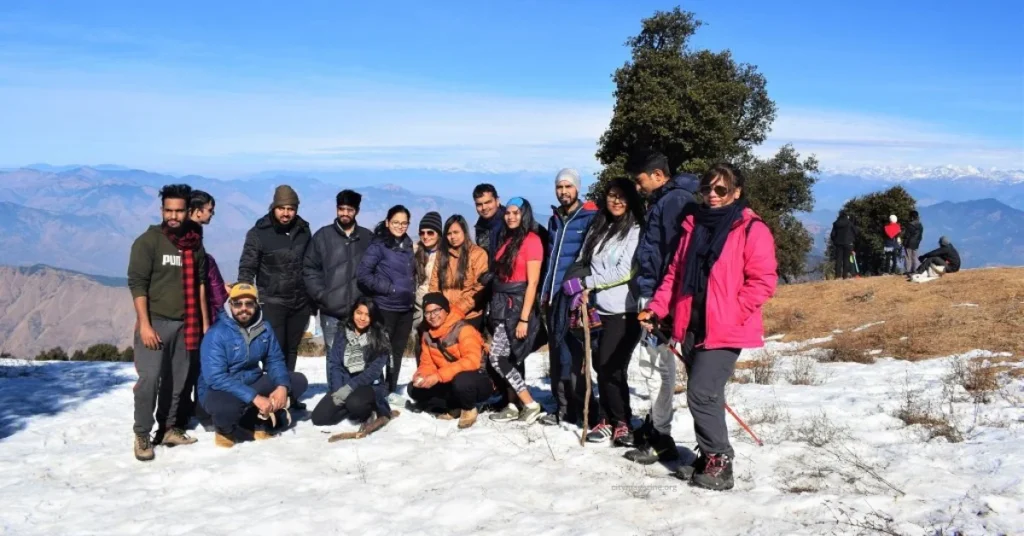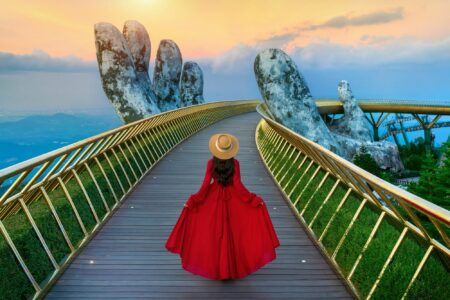The land of the Divine, Uttarakhand,, calls you for a life-altering trek, Nag Tibba. The state of Uttarakhand is home to more than 100 amazing treks which can be done during all seasons. Uttarakhand is based at the foothills of the Himalayas and is home to the mighty river Ganga. The state is highly underrated for its treks; it was not until recently that people across India got to know this hidden gem of the Himalayas.
Nag Tibba is one of the most picturesque and easy treks in Uttarakhand. At an elevation of 9000 ft, it stands to be the tallest peak in Garhwal ranges in Uttarakhand. The charm of Nag Tibba is despite being the highest peak; it is a short trek covered over the weekend. The picturesque Doon Valley and neighbouring peaks of Bandarpoonch, Kala Nag, Srikantha and Gangotri. The trek trail covers a diverse terrain, from dense forests to steep slopes to open ridges. The journey to the summit is rejuvenating, and the camp stay is just the cherry on top. The sublime view of golden rays touching the pristine white snow is how your morning looks in Nag Tibba.
This is a perfect getaway for long weekends for people living in Delhi and Chandigarh. The drive to Dehradun is merely 6 hours from Delhi, which makes up for the road trip part of the weekend. The trek is easy so that one wouldn’t need expertise in the field. However, hiring a local guide for the two-day tour would be viable.
The base village is Pantwari, which is approximately 80 km from Dehradun. The standard trek lasts two days and requires you to set up tents in the base village of Pantwari.
On day one of your treks, you travel to Pantwari from Dehradun or Mussoorie. You can rest here, unload some of the unwanted stuff, light up a bonfire, share stories, and laugh with the friendly shepherds and locals.
On day two, you begin your day with a warm breakfast and march towards the summit. The trail is covered with beautiful oak trees on both sides, some streams while passing through the jungle and vibrant flowers depending on when you hike.
The distance from Pantwari to the Nag Tibba summit is merely 8 km. As you reach the top, get your cameras ready for the snow-capped mountain and valley views. There is a temple on the top, which feels rewarding once you see it. After clicking photos to your heart’s content, descend to your base village. Subsequently, you will return to Dehradun by 9 p.m. and wake up in Delhi by the next morning.
The trek is all year long; the peak season remains from March to October. Suppose you want to experience immense snow on your tour; visit during December. The slopes, the ridges, trails, and trees are one-coloured, though instigating many emotions in you. The best part of trekking to Nag Tibba is its affordability, time saver, money saver, stunning views and fit for beginners. It rarely happens when a trek in the Himalayas with a height of 9000ft is considered to be an easy trek. Adding to its features, the base village is at 5000ft. The eye-capturing views are endless for the two days you stay here.
One must consider a few things while going on the Nag Tibba trek. The weather at 9000 ft can get chilly; hence, it is advised to get acclimatized to the cold weather and carry full-length jackets and camping gear like sleeping bags, thermals, gloves, and extraf socks.
By Monday, you will be a fresh pile of snow shining in the sunlight as you go about your day after an amazing weekend in the Himalayas. The journey back towards the city hurts the most, but not visiting Nag Tibba again hurts worse. You are completely in zen mode while in Himalayan peaks, basking in the golden glory of the Sun. Ensure you don’t litter the surroundings while trekking or dispose of plastic waste harming the environment. Be a responsible tourist and strive to preserve the natural wonders of the Himalayas at its best. This is probably the best trek for beginners in the Himalayas at such a short distance. All you need is to be physically fit and have endurance to get through the steep part of the trek.




